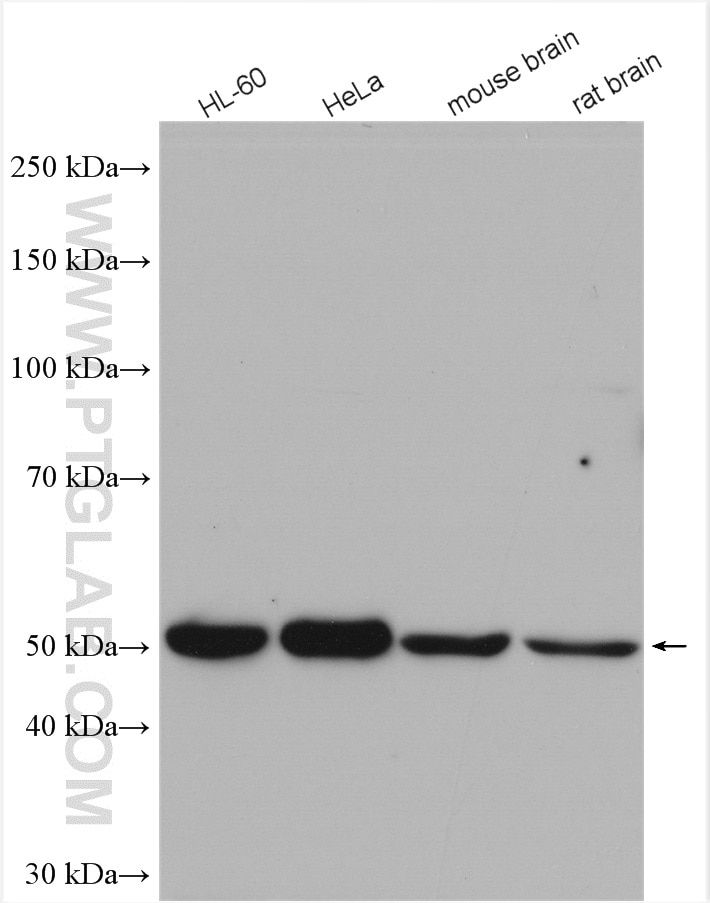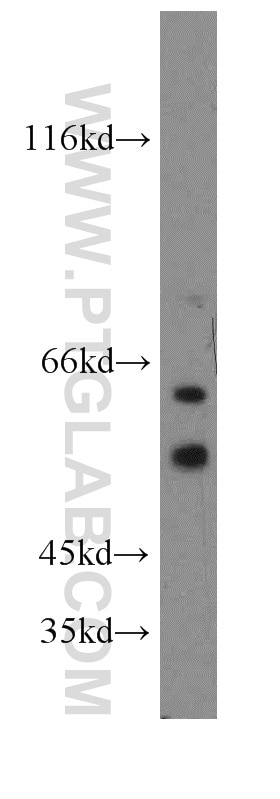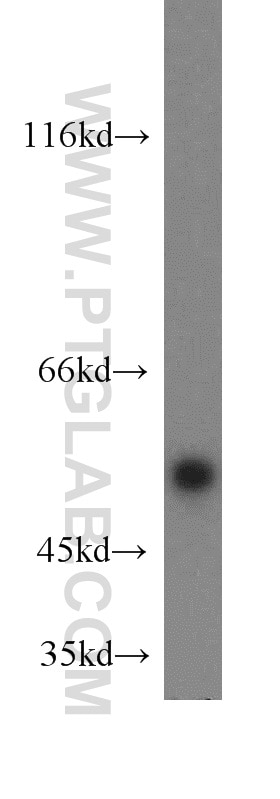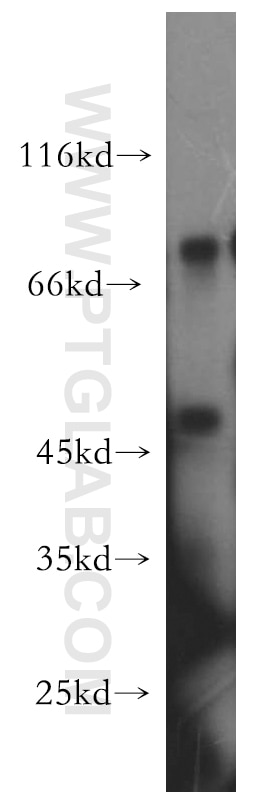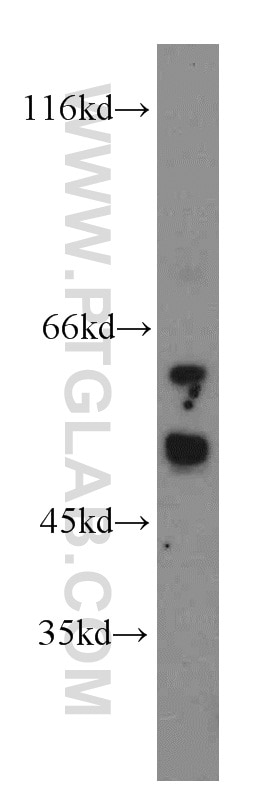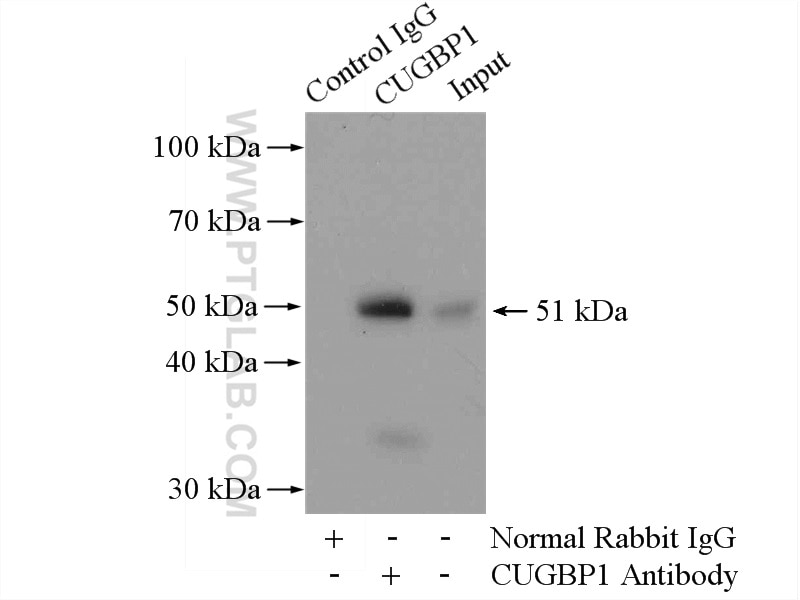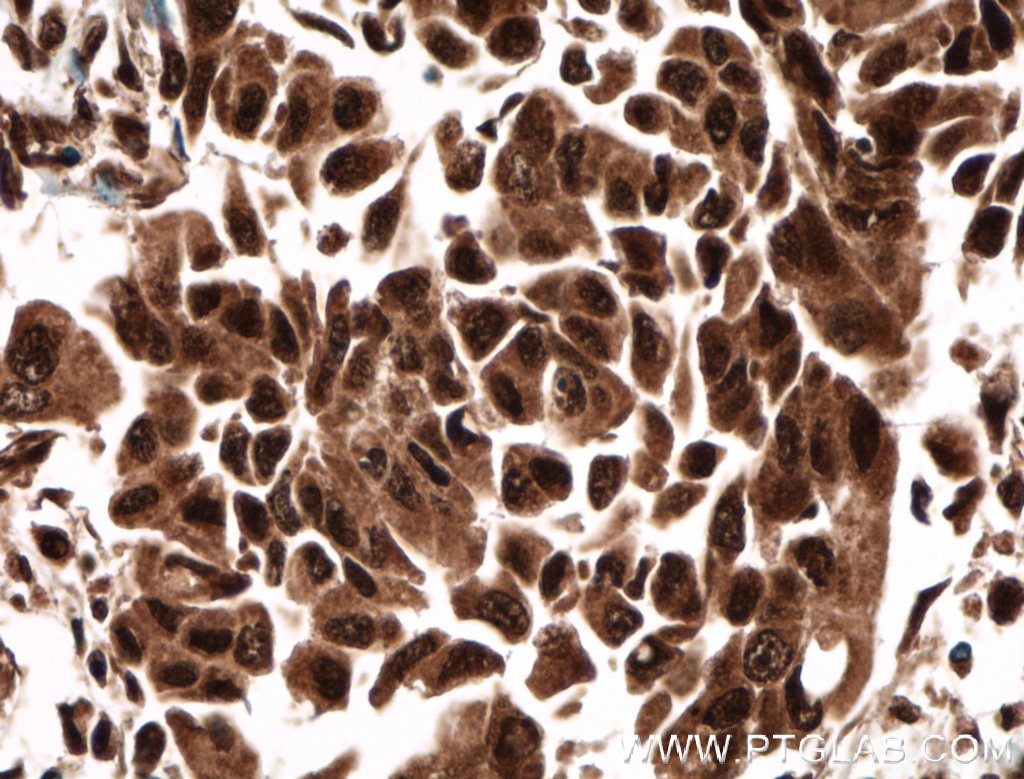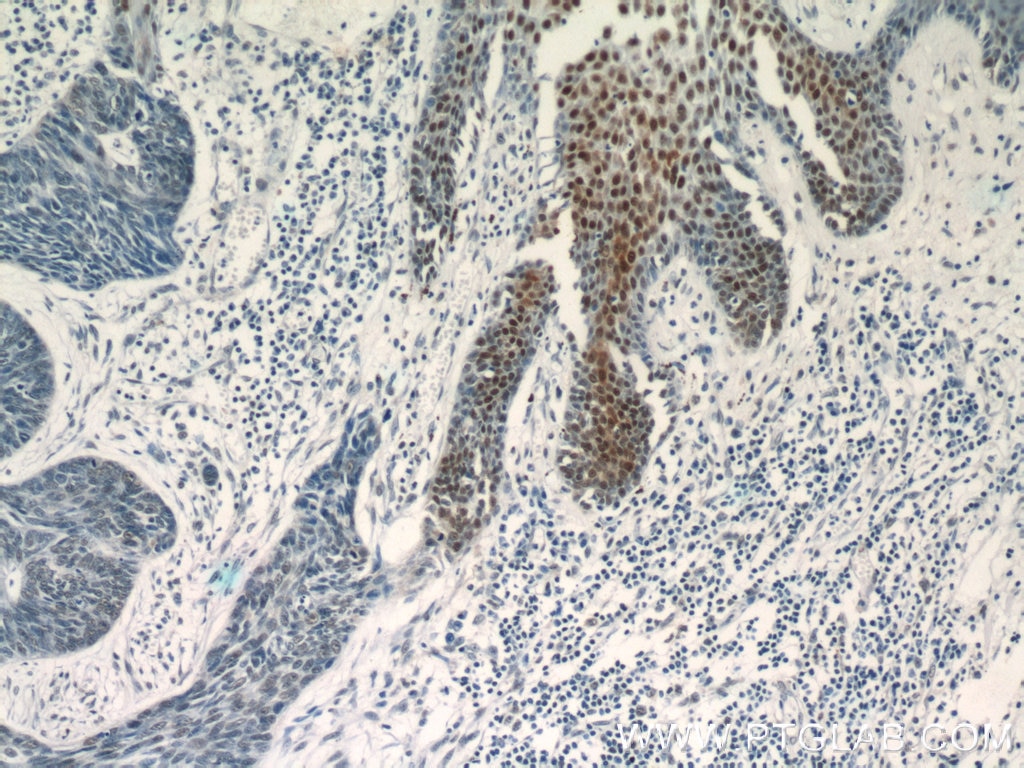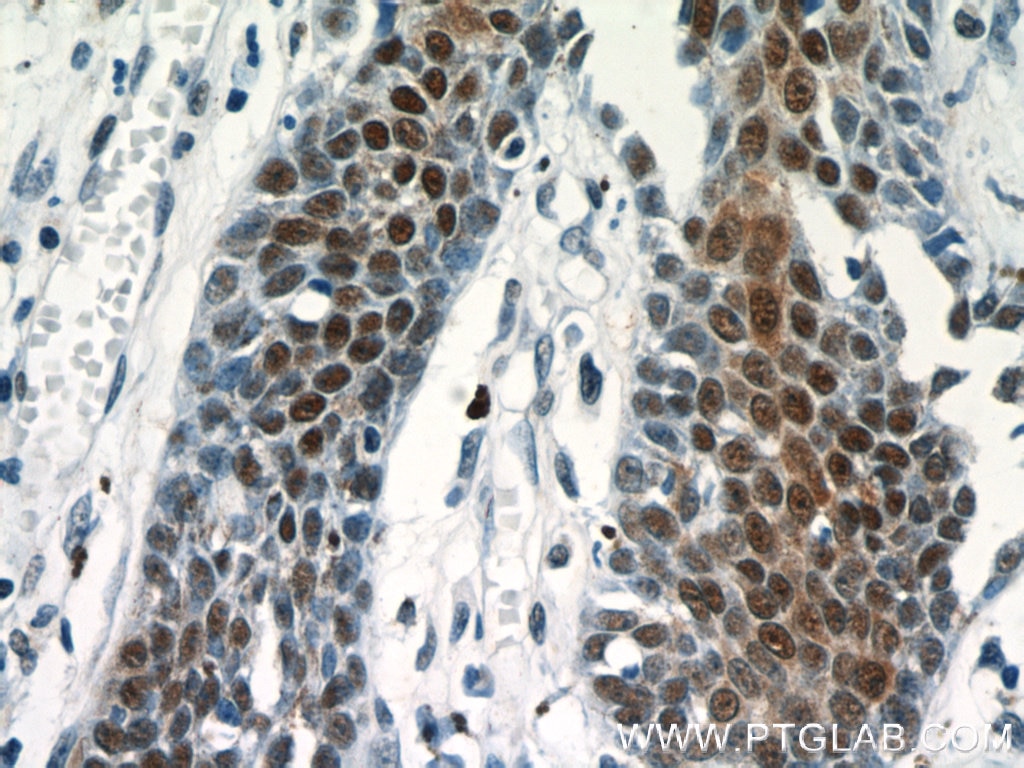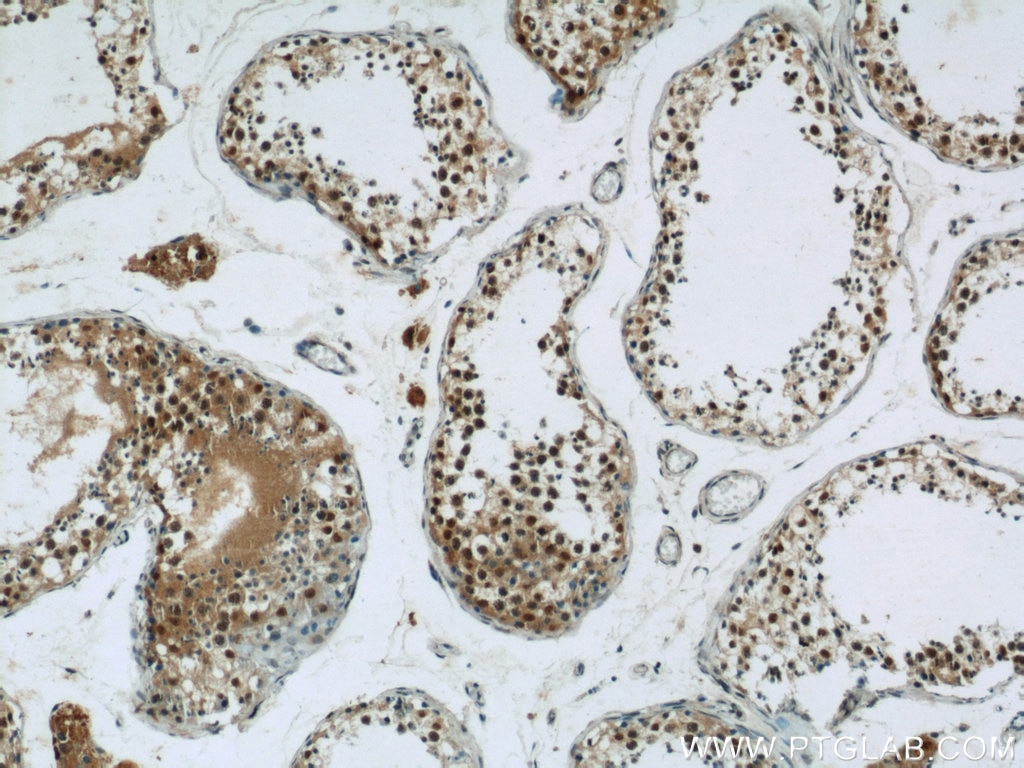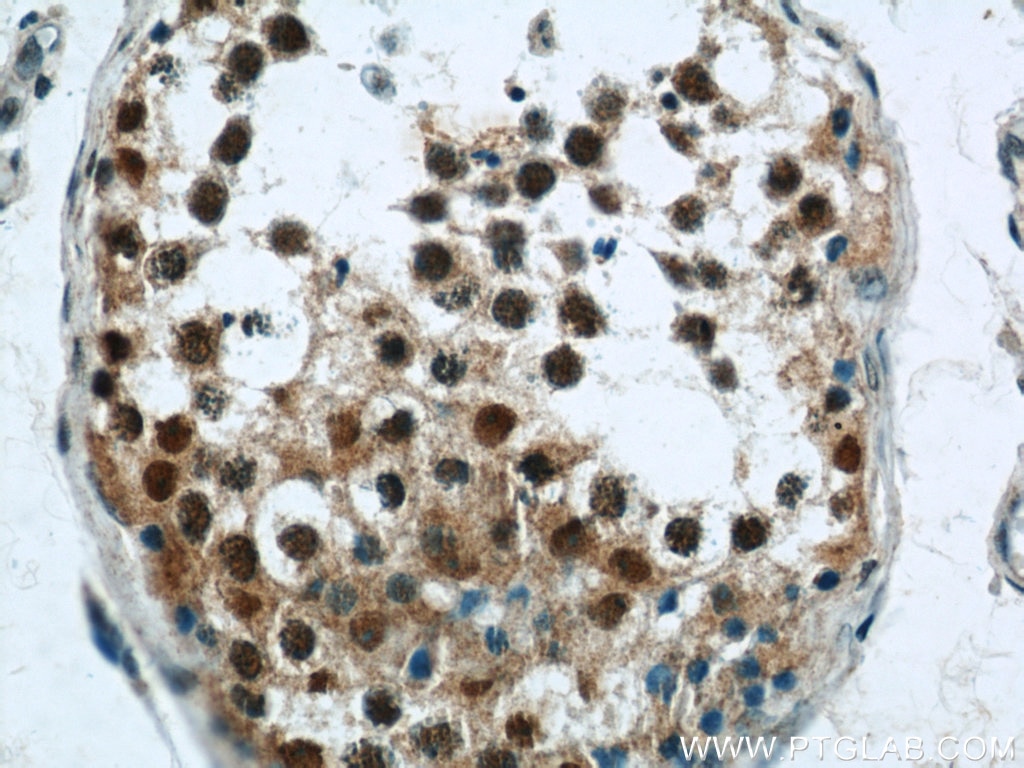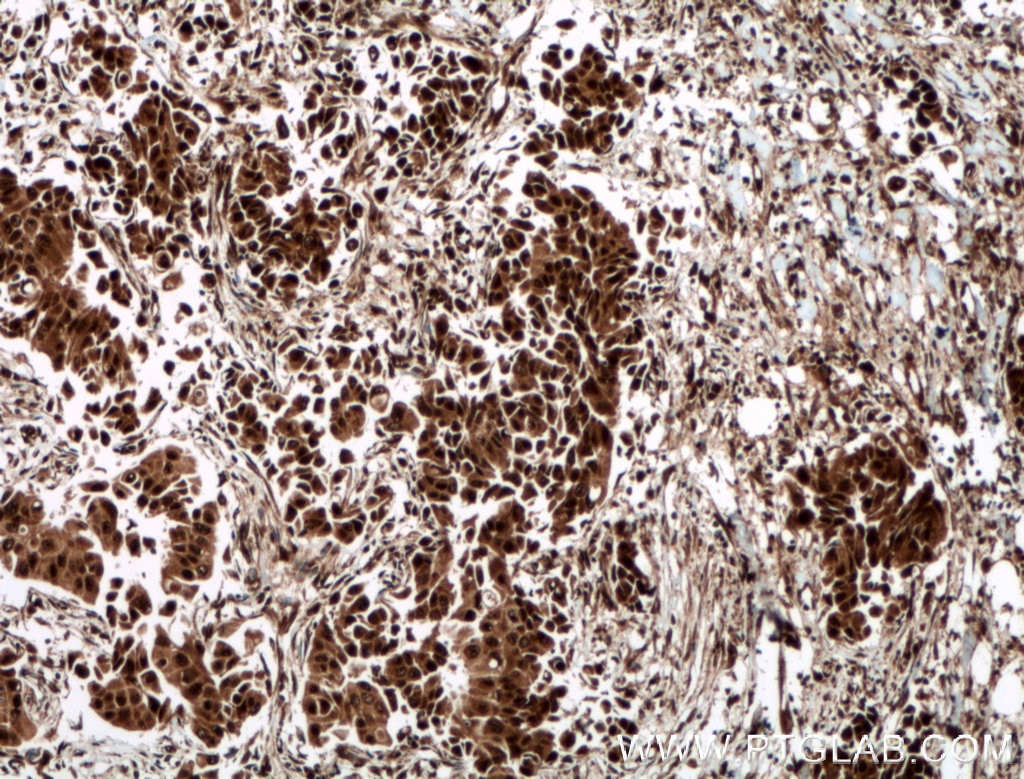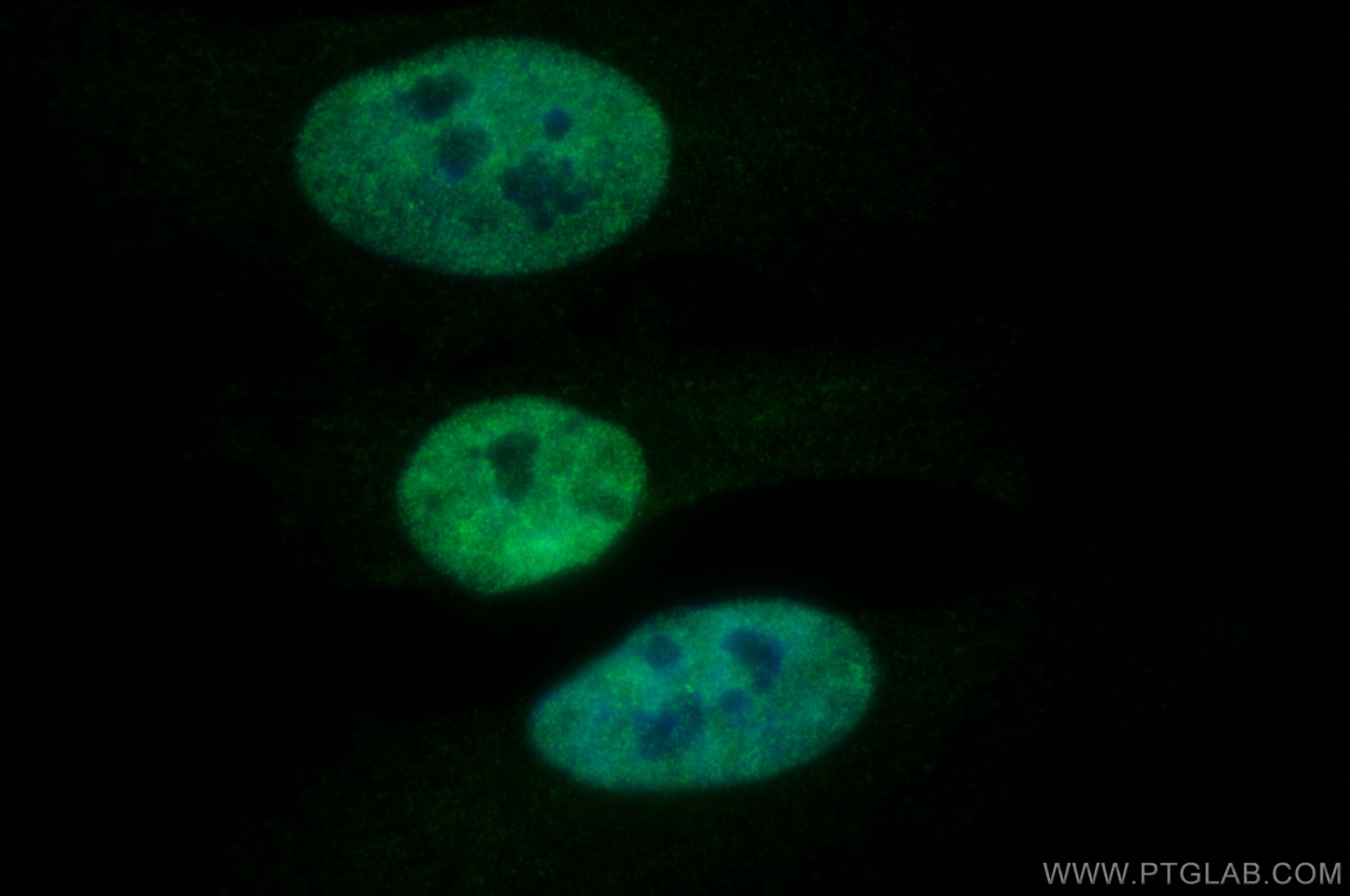- Phare
- Validé par KD/KO
Anticorps Polyclonal de lapin anti-CUGBP1
CUGBP1 Polyclonal Antibody for WB, IHC, IF/ICC, IP, ELISA
Hôte / Isotype
Lapin / IgG
Réactivité testée
Humain, rat, souris
Applications
WB, IHC, IF/ICC, IP, ELISA
Conjugaison
Non conjugué
N° de cat : 13002-1-AP
Synonymes
Galerie de données de validation
Applications testées
| Résultats positifs en WB | cellules HL-60, cellules HeLa, cellules HT-1080, cellules NIH/3T3, tissu cérébral de rat, tissu cérébral de souris |
| Résultats positifs en IP | cellules HeLa |
| Résultats positifs en IHC | tissu de cancer du sein humain, tissu de cancer de la peau humain, tissu testiculaire humain il est suggéré de démasquer l'antigène avec un tampon de TE buffer pH 9.0; (*) À défaut, 'le démasquage de l'antigène peut être 'effectué avec un tampon citrate pH 6,0. |
| Résultats positifs en IF/ICC | cellules HeLa, |
Dilution recommandée
| Application | Dilution |
|---|---|
| Western Blot (WB) | WB : 1:1000-1:4000 |
| Immunoprécipitation (IP) | IP : 0.5-4.0 ug for 1.0-3.0 mg of total protein lysate |
| Immunohistochimie (IHC) | IHC : 1:50-1:500 |
| Immunofluorescence (IF)/ICC | IF/ICC : 1:200-1:800 |
| It is recommended that this reagent should be titrated in each testing system to obtain optimal results. | |
| Sample-dependent, check data in validation data gallery | |
Applications publiées
| KD/KO | See 2 publications below |
| WB | See 4 publications below |
| IHC | See 1 publications below |
| IP | See 1 publications below |
Informations sur le produit
13002-1-AP cible CUGBP1 dans les applications de WB, IHC, IF/ICC, IP, ELISA et montre une réactivité avec des échantillons Humain, rat, souris
| Réactivité | Humain, rat, souris |
| Réactivité citée | rat, Humain, souris |
| Hôte / Isotype | Lapin / IgG |
| Clonalité | Polyclonal |
| Type | Anticorps |
| Immunogène | CUGBP1 Protéine recombinante Ag3677 |
| Nom complet | CUG triplet repeat, RNA binding protein 1 |
| Masse moléculaire calculée | 483 aa, 52 kDa |
| Poids moléculaire observé | 51-55 kDa |
| Numéro d’acquisition GenBank | BC031079 |
| Symbole du gène | CUGBP1 |
| Identification du gène (NCBI) | 10658 |
| Conjugaison | Non conjugué |
| Forme | Liquide |
| Méthode de purification | Purification par affinité contre l'antigène |
| Tampon de stockage | PBS with 0.02% sodium azide and 50% glycerol |
| Conditions de stockage | Stocker à -20°C. Stable pendant un an après l'expédition. L'aliquotage n'est pas nécessaire pour le stockage à -20oC Les 20ul contiennent 0,1% de BSA. |
Informations générales
CUG triplet repeat RNA binding protein 1 (CUGBP1) is a member of the CUGBP Elav-like family (CELF), which plays an important role in cardiac development and function (PMID: 17130239). CUGBP1 has also been shown to localize to cytoplasmic stress granules when cells are stressed.
Protocole
| Product Specific Protocols | |
|---|---|
| WB protocol for CUGBP1 antibody 13002-1-AP | Download protocol |
| IHC protocol for CUGBP1 antibody 13002-1-AP | Download protocol |
| IF protocol for CUGBP1 antibody 13002-1-AP | Download protocol |
| IP protocol for CUGBP1 antibody 13002-1-AP | Download protocol |
| Standard Protocols | |
|---|---|
| Click here to view our Standard Protocols |
Publications
| Species | Application | Title |
|---|---|---|
Hum Mol Genet CGG repeats in RNA modulate expression of TDP-43 in mouse and fly models of fragile X tremor ataxia syndrome. | ||
Carcinogenesis RNA-binding protein CUGBP1 controls the differential INSR splicing in molecular subtypes of breast cancer cells and affects cell aggressiveness.
| ||
Sci Rep DLX6-AS1 activated by H3K4me1 enhanced secondary cisplatin resistance of lung squamous cell carcinoma through modulating miR-181a-5p/miR-382-5p/CELF1 axis.
| ||
Bioengineered Guizhi Fuling pill attenuates liver fibrosis in vitro and in vivo via inhibiting TGF-β1/Smad2/3 and activating IFN-γ/Smad7 signaling pathways. | ||
iScience Insulin receptor isoform B is required for efficient proinsulin processing in pancreatic β cells | ||
Life Sci Alliance Endo-bind-n-seq: identifying RNA motifs of RNA binding proteins isolated from endogenous sources |
